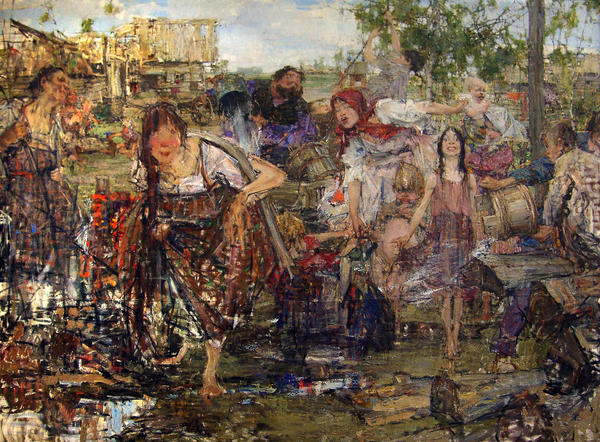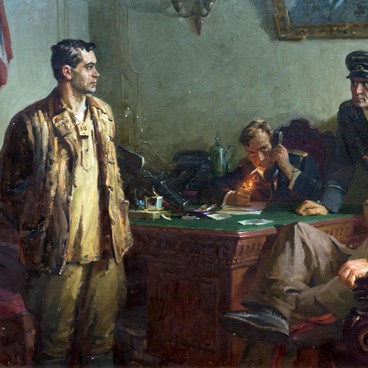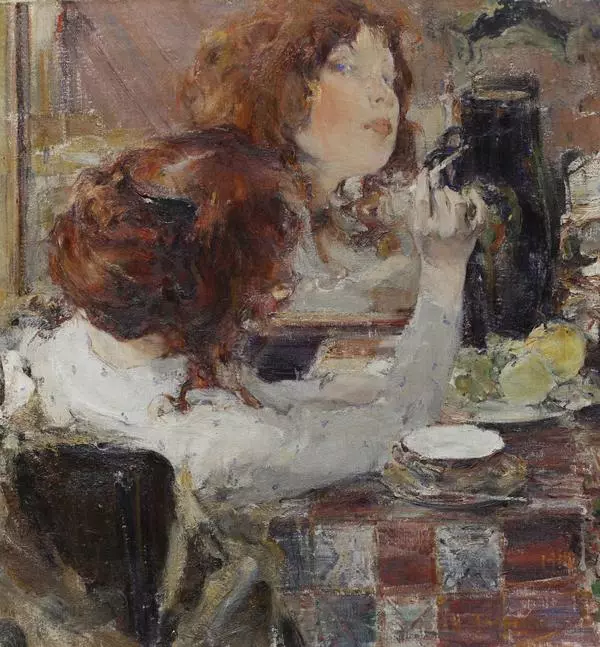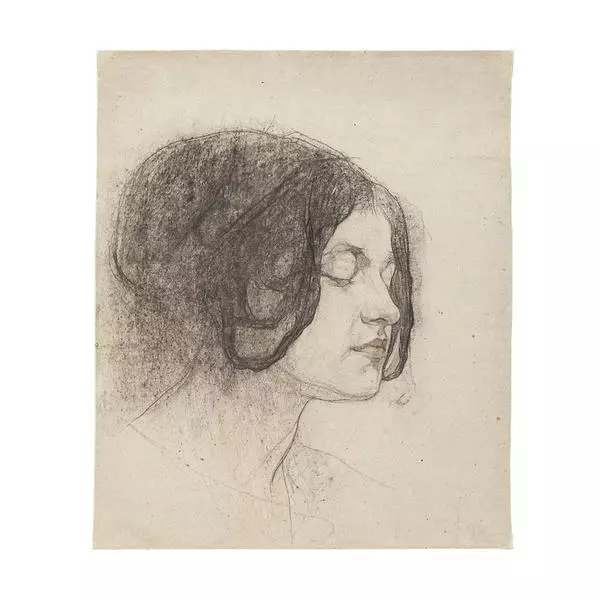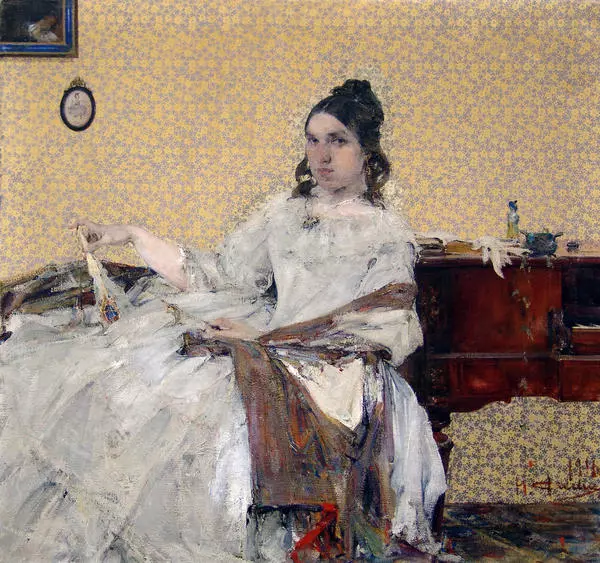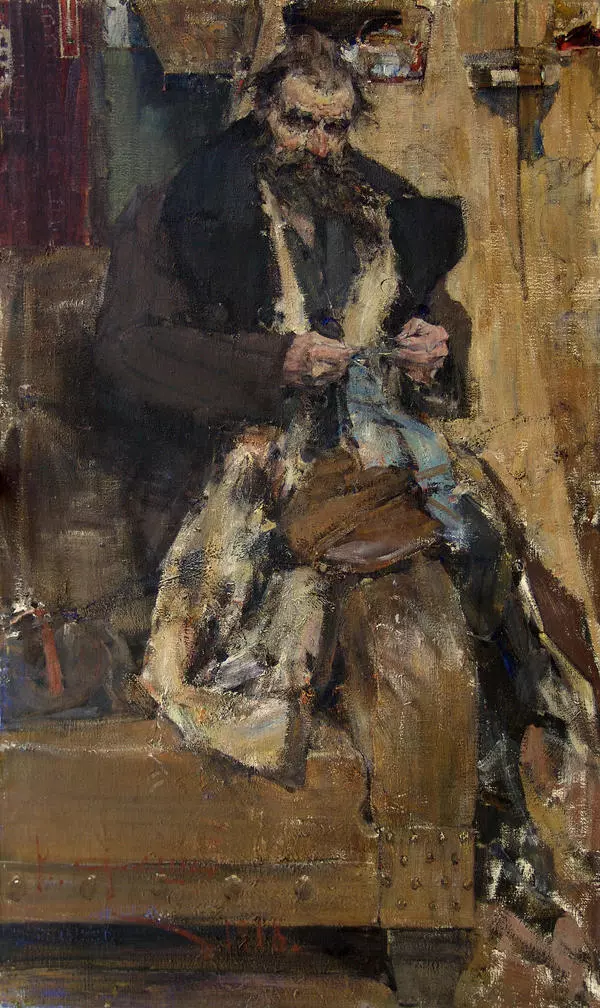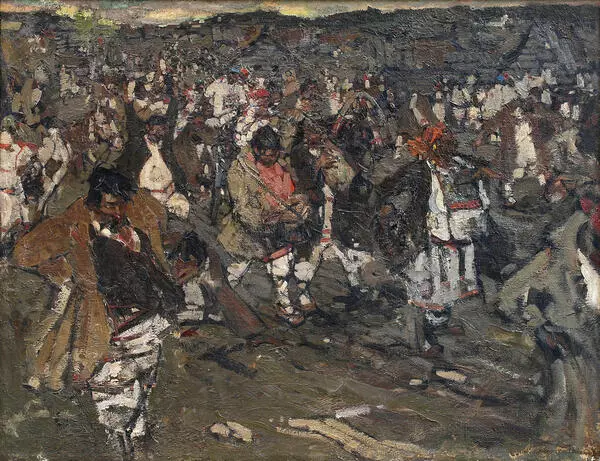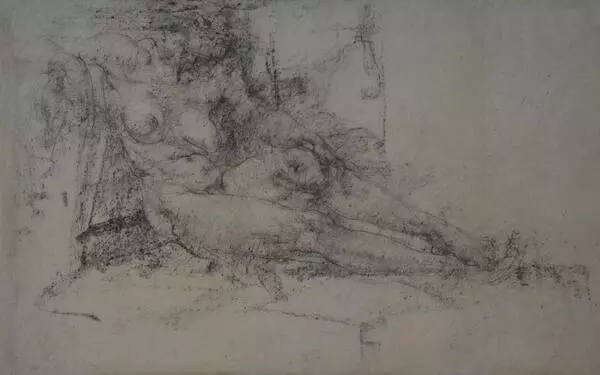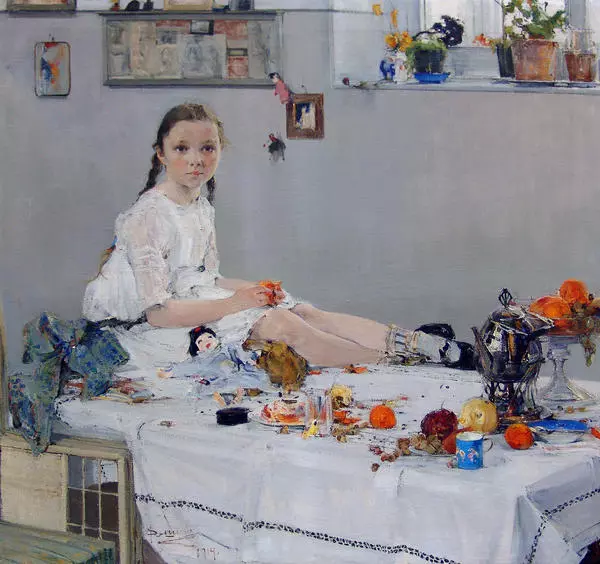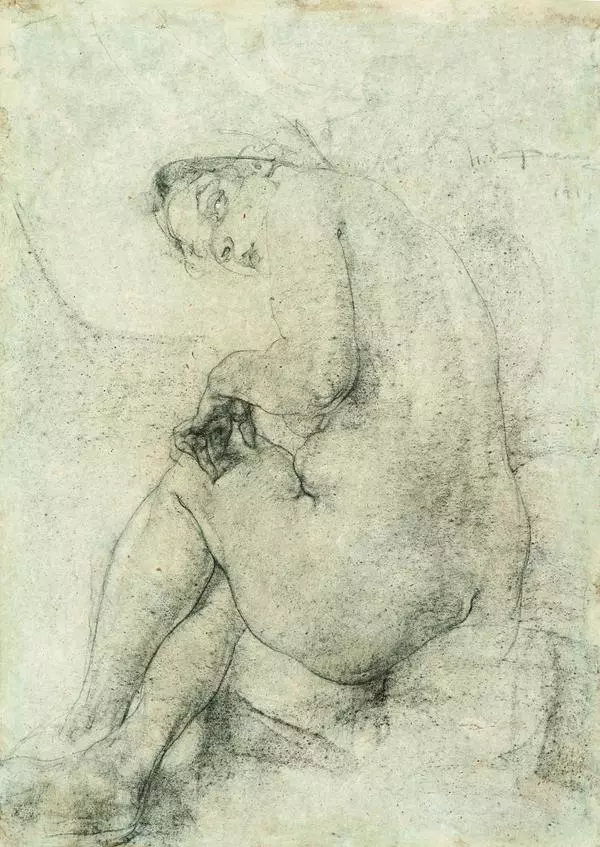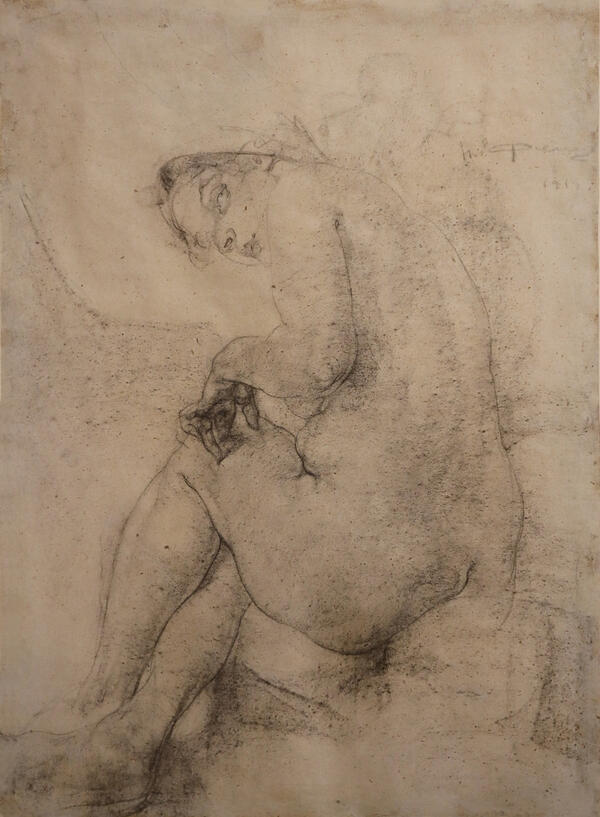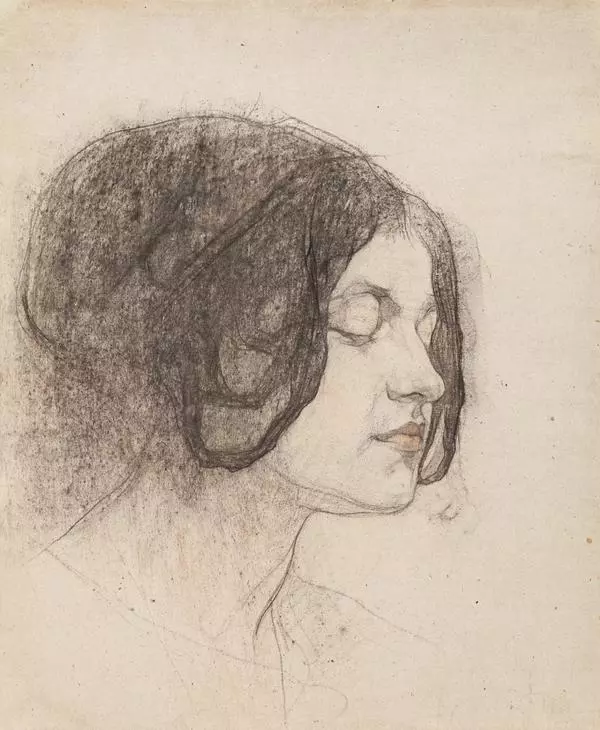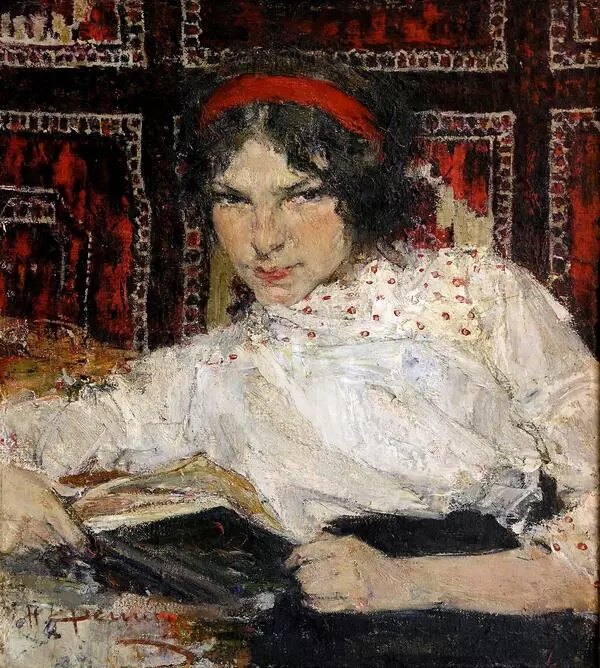Pouring painting by Nickolay Feshin is based upon the village people’s tradition of calling for the rain. In Russia the pouring rite was held in heat, which could inflict a crop failure. So, “… those missing the morning prayers in the Renewal Week… will be poured with water and ducked in the waters of rivers and ponds…”, historian Ivan Snegirev wrote. It is known that on Peter Day and Ivan Day village lads used to pull out girls hiding in houses and pour water over them. The girls in wet clothes joined the lads in dousing others and then they all went for a bathe. That tradition combined the Christian ceremony of “washing away sins” with ancient pagan practices of calling for the rain.
The scene of the painting is laid against the background of a typical countryside featuring thatch-roofed houses, footpaths and birch-trees. After praying for the rain fellow villagers pour water over each other near a drinking-water well. Since his student days Nickolay Feshin had travelled a lot around Russia in order to “paint from nature”. He witnessed that pouring scene in Nadezhdino village of Kazan Province.
Pouring painting became a follow-up to Nickolay Feshin’s ethnography works such as Cheremiss Wedding and Cabbage Fest. However, unlike the latter, Pouring remained unfinished. The artist never regarded formal completeness as an important criterion. He deliberately left many details incomplete. In particular, the image of a woman with a shoulder yoke is not elaborate thus drawing the viewer’s eye to a girl in pink, the focal point of the composition. Her slim figure is highlighted against the background of light-colored objects
– peasant women’s clothes and a water jar held by a boy.
One of the main challenges met by the artist in this painting was to convey strong emotions like laughing, crying or being frightened. If statically portrayed, the faces may get distorted in these unstable conditions resembling congealed hideous masks. The artist managed to represent all extreme emotions and ‘capture’ the moment of life.
When leaving Kazan in 1923 Nickolay Feshin left several paintings and sketches with the museum for safe keeping, including this one.
The scene of the painting is laid against the background of a typical countryside featuring thatch-roofed houses, footpaths and birch-trees. After praying for the rain fellow villagers pour water over each other near a drinking-water well. Since his student days Nickolay Feshin had travelled a lot around Russia in order to “paint from nature”. He witnessed that pouring scene in Nadezhdino village of Kazan Province.
Pouring painting became a follow-up to Nickolay Feshin’s ethnography works such as Cheremiss Wedding and Cabbage Fest. However, unlike the latter, Pouring remained unfinished. The artist never regarded formal completeness as an important criterion. He deliberately left many details incomplete. In particular, the image of a woman with a shoulder yoke is not elaborate thus drawing the viewer’s eye to a girl in pink, the focal point of the composition. Her slim figure is highlighted against the background of light-colored objects
– peasant women’s clothes and a water jar held by a boy.
One of the main challenges met by the artist in this painting was to convey strong emotions like laughing, crying or being frightened. If statically portrayed, the faces may get distorted in these unstable conditions resembling congealed hideous masks. The artist managed to represent all extreme emotions and ‘capture’ the moment of life.
When leaving Kazan in 1923 Nickolay Feshin left several paintings and sketches with the museum for safe keeping, including this one.

